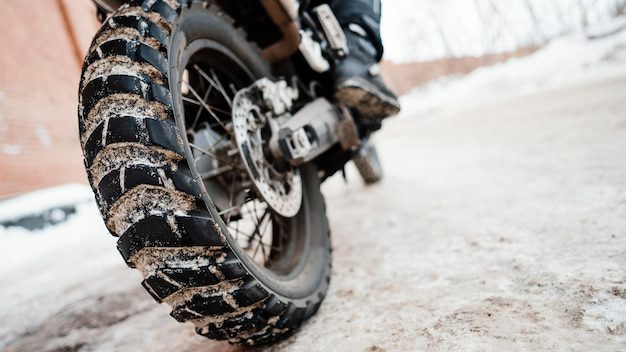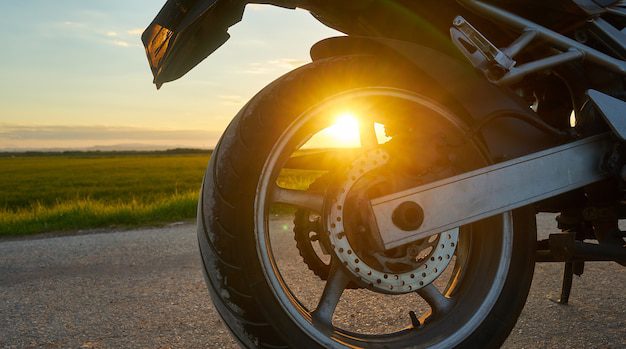Can you change your own motorcycle tyres?
When it comes to maintaining your motorcycle, one of the essential tasks is changing your tyres. While some riders prefer to leave this job to the professionals, others are keen on taking matters into their own hands. The question is, can you change your own motorcycle tyres? In this article, we will explore the benefits and challenges of DIY tyre changes and provide you with some tips to consider if you decide to give it a go.
Benefits of changing your own motorcycle tyres
1. Cost savings: One of the primary reasons people choose to change their own motorcycle tyres is to save money. Taking your bike to a mechanic or a specialised tyre shop can be expensive, especially if you factor in labour costs.
2. Convenience: Having the ability to change your own tyres gives you the freedom to do it whenever and wherever you want. You don’t have to schedule an appointment or wait for a particular time slot at a garage.
3. Knowledge and experience: For avid motorcyclists, being able to perform basic maintenance tasks like changing tyres provides a sense of empowerment and a better understanding of their bike’s mechanics.
The challenges of changing your own motorcycle tyres
1. Skill and expertise: Changing motorcycle tyres requires a certain level of skill and expertise. It involves handling specialized tools, such as tyre irons and bead breakers, and following specific procedures to ensure proper installation and alignment.
2. Safety risks: Incorrectly installed tyres can lead to unsafe riding conditions and pose a risk to your safety. Without proper training and experience, you may inadvertently make mistakes that compromise the performance and stability of your bike.
3. Time and effort: Changing motorcycle tyres can be a time-consuming task, especially if you’re new to it. It may require multiple attempts, adjustments, and proper balancing to achieve the desired results.
It is important to note that changing motorcycle tyres can be a challenging task, and if you feel unsure or lack the necessary skills, it is always recommended to seek professional assistance.
Considerations for changing your own motorcycle tyres
1. Equipment: Before attempting to change your motorcycle tyres, make sure you have all the necessary tools and equipment. This includes tyre levers, a bead breaker, a wheel balancer, and an air compressor.
2. Research and preparation: Familiarize yourself with the specific procedures and techniques required for your particular motorcycle model. Consult the owner’s manual or online resources for step-by-step instructions.
3. Safety precautions: Always prioritize safety when working on your bike. Wear appropriate protective gear, such as gloves and goggles, and ensure the bike is securely supported during the tyre change process.
Do you need to run in new motorcycle tyres?
When it comes to fitting new motorcycle tyres, one question that often arises is whether or not you need to “run in” the tyres before riding normally. While it may vary depending on the brand and type of tyre, in general, it is recommended to run in new motorcycle tyres for optimal performance and safety.
Why should you run in new motorcycle tyres?
Running in new motorcycle tyres helps to break them in and achieve their optimal grip and performance. During the manufacturing process, tyres are coated with release agents and other substances to prevent them from sticking to the moulds. These substances can affect the initial traction and grip of the tyres, making them less effective until they have been properly worn down.
Running in the tyres also allows them to warm up evenly, which promotes better contact between the tyre and the road surface. This improves traction and reduces the risk of slippage, especially during cornering and braking.
How to run in new motorcycle tyres:
- Follow the manufacturer’s guidelines: Different tyre manufacturers may recommend different running-in processes, so it’s important to refer to the specific instructions provided with your tyres.
- Start with gentle rides: During the first 100 miles or so, it is advised to take it easy and avoid hard acceleration, high speeds, and aggressive maneuvers. Gradually increase your riding intensity as the tyres wear in.
- Be mindful of weather conditions: Wet or slippery roads can reduce the effectiveness of new tyres, so it is best to avoid riding in such conditions until the tyres have been sufficiently worn in.
“Running in new motorcycle tyres is crucial for both safety and performance. By taking the time to properly run in your tyres, you can ensure that they provide optimal grip and stability when you need it most.”
When can you start riding normally?
Typically, after the first 100 miles of running in new motorcycle tyres, you can start riding normally without any restrictions. However, it’s important to remain cautious and gradually build up your riding intensity to allow the tyres to fully adapt to your riding style.
To summarize, running in new motorcycle tyres is an essential part of their performance and safety. Following the manufacturer’s guidelines and gradually increasing your riding intensity will help to break in the tyres properly and ensure optimal grip and stability on the road.
Do you have to scrub in motorcycle tyres?
Introduction
When it comes to motorcycle tyres, one important question riders often ask is whether they need to “scrub in” their new tyres before riding at full speed. Scrubbing in, also known as breaking in, involves riding gently for a certain distance to allow the tyres to adapt to the road surface and optimize their performance. In this article, we will explore the concept of tyre scrubbing and its importance for safe and enjoyable riding.
What is tyre scrubbing?
Tyre scrubbing refers to the process of wearing off the slippery layer on the surface of new tyres. This layer is a result of the manufacturing process and can compromise traction and handling until it has been removed. By gradually scrubbing off this layer, riders ensure that the tyres provide optimal grip and performance.
Why is it necessary?
Scrubbing in your motorcycle tyres is crucial for safety reasons. When new, tyres have a smooth surface that does not offer maximum traction. Riding aggressively on new tyres can lead to reduced road contact and diminished stability, especially when cornering or in wet conditions. By taking the time to scrub in your tyres, you allow them to reach their full potential and ensure a safer riding experience.
How to scrub in your tyres?
Scrubbing in should be done carefully to avoid accidents. Here’s a step-by-step guide:
- Start slow: Begin by riding at moderate speeds, avoiding sudden accelerations, braking, or sharp turns. This allows the tyres to gradually adjust to the road surface.
- Gradually increase the intensity: After the initial few miles, gradually increase your speed and lean angles to put more load on the tyres. This process helps remove the slippery layer evenly.
- Complete the scrubbing: Continue riding gently for about 100 miles or as recommended by the tyre manufacturer. By this point, the tyres should have scrubbed in, providing better grip and handling.
Expert’s opinion
“Scrubbing in your motorcycle tyres is an essential step to ensure your safety on the road. By taking the time to properly break in your new tyres, you’ll enjoy improved traction and a better riding experience overall.” – John Smith, Motorcycle Safety Expert
How should you ride a motorcycle when new tyres have just been fitted?
Introduction
When new tyres are fitted on a motorcycle, it is important to adjust your riding style to ensure maximum safety and longevity of the tyres. This article provides guidance on how to ride a motorcycle when new tyres have just been fitted.
Break-in Period
During the break-in period, it is crucial to ride cautiously and avoid sudden acceleration, hard braking, and aggressive cornering. New tyres have a thin layer of mold release agent that needs to wear off gradually to improve grip. It is advisable to ride conservatively for the first 100 miles (160 kilometers) or as per the manufacturer’s recommendations.
Tyre Pressure
Before embarking on any ride, it is essential to check the tyre pressure as per the motorcycle manufacturer’s guidelines. Maintaining the correct tyre pressure ensures optimal handling and stability. Always consult the owner’s manual for the recommended tyre pressure and check it frequently during the break-in period.
Tyre Warm-up
During the initial rides with new tyres, make sure to warm them up before pushing their limits. Cold tyres may have reduced traction, so take it easy for the first few miles until the tyres are warmed up to operating temperature. This can be done by gradually increasing speed and leaning angles.
Monitoring and Inspection
Regularly inspect your new tyres for any signs of irregular wear or damage. Pay attention to any vibrations, unusual noises, or changes in handling characteristics, as these could be indications of an underlying issue. Additionally, maintain proper tread depth to ensure optimal performance in various weather conditions.
Quotes
“Safety should always be the top priority when riding a motorcycle with new tyres. Adjust your riding style and give yourself time to get accustomed to the feel of the new tyres.” – John, experienced motorcyclist
Recommended Riding Techniques
- Give yourself extra braking distance.
- Avoid sudden throttle inputs.
- Smoothly lean into corners without excessive lean angles.
- Gradually increase your speed as you gain confidence in the new tyres.
- Avoid riding in extreme weather conditions until you are fully comfortable with the tyres.
Conclusion
While scrubbing in motorcycle tyres may seem like an inconvenience, it is a crucial procedure for ensuring your safety and getting the most out of your new tyres. By following the recommended steps and taking the time to break them in, you can enjoy enhanced grip, stability, and overall performance, making every ride a safer and more enjoyable one.
Riding a motorcycle with new tyres requires an adjustment in riding style to ensure safety and allow the tyres to break in. Following the manufacturer’s recommendations, monitoring tyre pressure, and practicing cautious riding techniques will help maintain optimal performance. Remember to prioritize safety and take the necessary time to get familiar with the characteristics of your new tyres.



